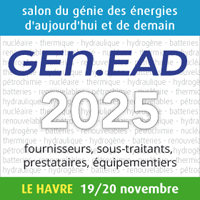juil.
09
2009 | IEA says that G8 call for increased investment in energy supply, energy efficiency and low-carbon technology is timely and urgent
“The far-reaching effects the current financial and economic crisis will have on energy security and climate change, coupled with plunging investment, demand urgent and global action to put the world on a more sustainable path. The IEA is delighted that G8 leaders have put a strong focus on these pressing energy issues and are ready to step to the forefront in mobilising this global effort”, said Nobuo Tanaka, Executive Director of the International Energy Agency (IEA) after the G8 Summit leaders’ declaration was issued in l´Aquila, Italy. “The G8 has recognised the need for greater investment in energy to expand employment and ensure resumption in economic growth, while also achieving reduced emissions of greenhouse gases and more secure energy supplies. At a time of widespread uncertainty, governments can and must lead the way through increased energy diversification and most importantly, improved energy efficiency, both of which can reduce oil market tightness and volatility.”
The IEA shares the G8 concern that unpredictable energy markets and highly volatile prices hinder industry efforts to plan and realise new energy investment. IEA calculations show that global investment in upstream oil and gas has already been cut by 21% this year compared to 2008 – a reduction of about USD 100 billion. “To reduce excessive volatility of prices and lower investment risks, we urge governments to adopt transparent, stable policies to promote energy investment and to improve their regulation of futures markets. The IEA welcomes the G8 support for our work,” said Nobuo Tanaka. “And, together we must ensure that sound long-term energy investment strategies are at the heart of every economic stimulus package”.
The IEA has calculated that of the total USD 2.6 trillion of public spending in short-term economic stimulus packages announced to date, USD 100 billion have been directed at energy efficiency and clean energy. “This is a step in the right direction. But, much more needs to be done; investment in energy efficiency and clean technologies would need to increase four-fold if we want to keep the rise in global average temperature under 2o C. This means USD 400 billion more every year over the next 20 years”, Mr. Tanaka said. Limiting the temperature increase to around 2o C will require that CO2 emissions be reduced by at least 50% by 2050. To realise this scenario, the IEA has found that emissions would need to be limited to 26 gigatonnes (Gt) by 2030, versus our expectation that they will reach 41 Gt if policies don´t change. Improvements in energy efficiency would account for the bulk of this emissions reduction, 54%, followed by more renewable energy and nuclear power, and carbon capture and storage (CCS) after 2020.
Against this background, the IEA welcomes the G8 focus on energy savings and is delighted that Summit leaders support the IEA’s ongoing work on identification and dissemination of best practices, standards and recommendations for increasing energy efficiency. “Energy efficiency policy is where governments truly can make a difference. We are honoured to host the secretariat of the newly launched International Partnership for Energy Efficiency Cooperation (IPEEC) – a milestone in international cooperation on energy efficiency policy – and welcome the G8 call for IPEEC to take into account the 25 G8/IEA efficiency recommendations as it considers its work program”, Mr. Tanaka said. If all IEA recommendations were implemented globally, around 8.2 Gt CO2 per year could be saved by 2030. This is more than the current energy-related CO2 emissions of Japan and the US combined. Even though efficiency policy action is underway in all G8 countries, no country has realised the full potential for reduction that these recommendations can provide. The IEA therefore calls on the G8 and all countries to begin full and urgent implementation.
The G8 communiqué also stresses that efficient markets, including carbon markets, are central to reducing emissions, and highlights the important role that agreements on specific sectors can play in cases where nation-wide commitments are lacking. The G8 explicitly welcomes the ongoing work of the IEA in this respect. Calling for enhanced technology development and research to mitigate climate change, it also applauds the Agency´s initiative to develop roadmaps for the most important new energy technologies. The IEA is currently working on 19 roadmaps, including for solar PV, wind, electric/hybrid vehicles, CCS, nuclear power and the cement industry. Together, they have the potential to provide almost 90% of the reductions needed to halve global energy-related CO2 emissions by 2050. “As those roadmaps are an essential step but not self-implementing, we need to create a global platform on low-carbon energy technology that would bring together all countries and the private sector – a cooperation we consider essential for ensuring full and global roadmap implementation,” Mr. Tanaka said. “As requested by G8 Energy Ministers at their meeting in Rome earlier this year and reiterated in the G8 leaders’ communiqué, the IEA has begun work to elaborate a vision for such a platform and will continue its roadmap work,” he added.
Amongst roadmap technologies, CCS plays a crucial role. At their 2008 Summit in Toyako G8 leaders committed to announce at least 20 fully integrated industrial-scale CCS demonstration projects worldwide by 2010, with implementation by 2020. Reaffirming this commitment, the 2009 G8 communiqué encourages greater involvement of developing countries by better co-operation and information diffusion, including through IEA regional roundtables. It also invites the IEA to develop its CCS roadmap and to work closely with the Global CCS Institute, the Carbon Sequestration Leadership Forum and the private sector to accelerate the construction and operation of demonstration projects.
“We believe that now is the time for CCS. If we do not develop several large-scale integrated CCS demonstration projects within the next decade, we won’t be able to deploy the technology in time to prevent CO2 levels from exceeding allowable limits. If that happened, our only alternative would be to develop and deploy novel technologies to remove CO2 from the air, which would be enormously expensive and may not succeed. Time is running out. Strong leadership now is essential to prevent this,” Mr. Tanaka concluded.
Source : Communiqué IEA
Voir la fiche de l'entreprise IEA
| |
|
|






  
|